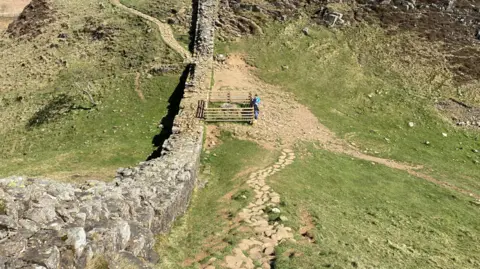Sycamore Gap Tree: The Legacy, Loss, and the Story Behind Its Felling
The Sycamore Gap tree stood as an iconic symbol in the heart of Northumberland, England. Nestled within a dramatic dip along Hadrian's Wall, this solitary sycamore became one of the country’s most beloved landmarks, drawing photographers, hikers, and nature enthusiasts from across the world. Its recent loss has left a visible gap not just in the landscape, but in the hearts of many who cherished it.

The Iconic Status of the Sycamore Gap Tree
For years, the Sycamore Gap tree inspired awe with its striking beauty. Uniquely positioned against the skyline on ancient Hadrian's Wall—a UNESCO World Heritage Site—the tree was featured in films, postcards, and social media around the globe. Its prominence made it a symbol of resilience and natural elegance.
Visitors often shared memories of reaching the tree after walking long stretches along the historic Roman wall. Its presence provided a welcome spot to pause and reflect amid the scenic English countryside.
The Fateful Morning: A Loss Felt Worldwide
On September 28, 2023, tragic news broke. The Sycamore Gap tree was found felled, shocking the local community and audiences worldwide. Gary Pickles, a park ranger, was first to discover the destruction. In an interview with BBC News, Pickles described his disbelief: "As I got nearer and nearer, I just thought 'it's gone, it's gone.'" The impact reverberated rapidly, turning what seemed like local vandalism into an international headline within hours.
The deliberate act led to mourning and anger. The tree's absence left not just a gap in the landscape, but a wound in the collective memory of countless visitors, conservationists, and residents. As reported, even staff at the National Trust were devastated, with many expressing their grief openly.
The Investigation and Verdict
The incident quickly drew national and global attention. Northumbria Police confirmed the act was intentional and launched an investigation. Evidence surfaced, and soon the case made its way to court.
On May 9, 2025, a jury at Newcastle Crown Court reached a verdict. According to ABC News, two men—the accused—were found guilty of cutting down the Sycamore Gap tree and damaging Hadrian's Wall. The trial revealed compelling evidence, including video recordings and messages exchanged by the perpetrators. The economic value of the tree and the wall added context to the magnitude of the loss.
Global Reaction and Ongoing Legacy
The felling of the Sycamore Gap tree sparked a worldwide outpouring of emotion. It demonstrated just how deeply a single tree could be woven into the fabric of a nation and its cultural consciousness. Coverage from respected outlets like The New York Times highlighted the global interest, while local and international media continued to update the public on developments.
In the wake of its loss, organizations and individuals have looked for ways to honor the tree’s memory. Conservation groups and local authorities are considering planting saplings and planning commemorative projects. The Sycamore Gap site remains a destination, with many still visiting to pay their respects.
Conclusion: Remembering a National Treasure
The Sycamore Gap tree was more than a plant; it was a landmark etched into the landscape and the national psyche. Its story is one of beauty, abrupt loss, and the unifying power of nature. As efforts to remember and perhaps replace the tree move forward, its enduring legacy will continue to inspire all who treasured its singular presence along Hadrian’s Wall.